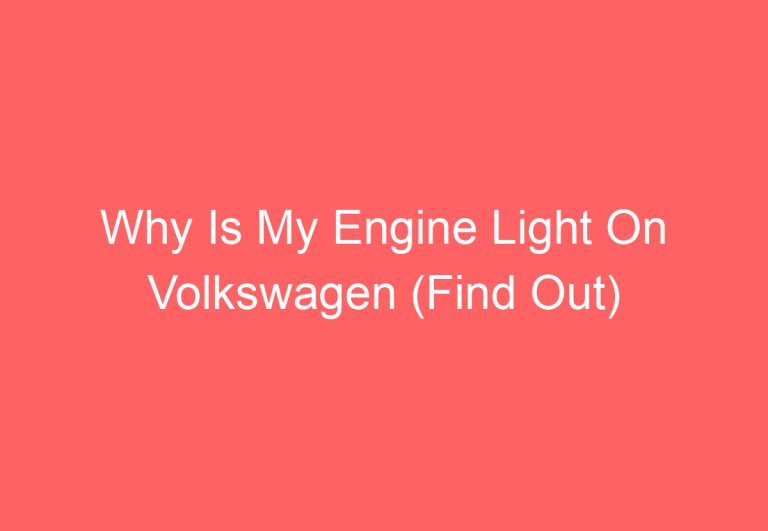How To Rebuild Your Volkswagen Air Cooled Engine Pdf Free (Explained)
Do you own a classic Volkswagen Beetle or Bus If so, you know that these air-cooled engines are known for their reliability and longevity. But even the best engines need to be rebuilt eventually. That’s where this guide comes in.
In this free PDF, I’ll walk you through the entire process of rebuilding your Volkswagen air-cooled engine, from start to finish. I’ll cover everything you need to know, from removing the old engine to installing the new one. I’ll also provide tips and tricks to help you along the way.
So if you’re ready to take on this project, download my free PDF today!
Rebuild Your VW Air-Cooled Engine in 3 Easy Steps
1. Remove the engine from the vehicle:
2. Disassemble the engine:
3. Reassemble the engine and install it in the vehicle:
How to Rebuild Your Volkswagen Air Cooled Engine
Tools and Materials
Engine block
Cylinder head
Pistons and rings
Connecting rods
Crankshaft
Camshaft
Valves and springs
Timing belt or chain
Oil pan
Oil pump
Thermostat
Water pump
Radiator
Hoses and clamps
Gaskets
Sealants
Threadlocker
Loctite
Penetrating oil
Wrenches
Socket set
Screwdrivers
Pliers
Hammer
Chisel
Files
Sandpaper
Rags
Safety glasses
Gloves
Step 1: Remove the Engine
1. Disconnect the battery.
2. Drain the coolant from the radiator.
3. Disconnect the fuel lines from the fuel pump.
4. Disconnect the throttle cable from the carburetor.
5. Disconnect the exhaust manifold from the cylinder head.
6. Disconnect the intake manifold from the cylinder head.
7. Remove the valve covers.
8. Remove the spark plugs.
9. Remove the rocker arms and pushrods.
10. Remove the cylinder head bolts and lift off the cylinder head.
11. Remove the oil pan bolts and drain the oil.
12. Remove the oil pump.
13. Remove the crankshaft pulley.
14. Remove the crankshaft and camshaft bearings.
15. Remove the crankshaft and camshaft.
Step 2: Inspect the Engine Components
1. Inspect the cylinder walls for cracks or scoring.
2. Inspect the pistons for wear and damage.
3. Inspect the rings for wear and damage.
4. Inspect the connecting rods for wear and damage.
5. Inspect the crankshaft for wear and damage.
6. Inspect the camshaft for wear and damage.
7. Inspect the valves and springs for wear and damage.
8. Inspect the timing belt or chain for wear and damage.
9. Inspect the oil pan for leaks.
10. Inspect the oil pump for leaks.
11. Inspect the thermostat for leaks.
12. Inspect the water pump for leaks.
13. Inspect the radiator for leaks.
Step 3: Reassemble the Engine
1. Assemble the crankshaft and camshaft bearings.
2. Install the crankshaft and camshaft.
3. Install the oil pump.
4. Install the oil pan.
5. Install the timing belt or chain.
6. Install the valve covers.
7. Install the spark plugs.
8. Install the rocker arms and pushrods.
9. Install the cylinder head.
10. Install the intake manifold.
11. Install the exhaust manifold.
12. Connect the throttle cable to the carburetor.
13. Connect the fuel lines to the fuel pump.
14. Connect the coolant hoses to the radiator.
15. Reconnect the battery.
Step 4: Test Drive the Engine
Once the engine has been rebuilt, it is important to test drive it to make sure that it is running properly. Here are a few things to check for when test driving the engine:
Make sure that the engine is starting and running smoothly.
Make sure that the engine is not making any strange noises.
Make sure that the engine is not overheating.
Make sure that the engine is getting good gas mileage.
If you notice any problems with the engine, it is important to have it serviced by a qualified mechanic.


![Check Engine Code 6480 Volkswagen [Find Out]](https://volkswagenbuddy.com/wp-content/uploads/2024/05/check-engine-code-6480-volkswagen-find-out_4246-768x531.jpg)

![2013 Volkswagen Engine Code Turbo [Explained]](https://volkswagenbuddy.com/wp-content/uploads/2024/05/2013-volkswagen-engine-code-turbo-explained_4232-768x531.jpg)
